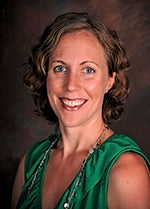Guest Column: Local United Way focuses on what matters
Published 12:48 am Saturday, September 9, 2017
Live United by Ann Austin
Years ago, before our United Way adopted the Imagination Library program, we published an annual children’s book. Each book was written and illustrated by community members, then given out to all K-third-graders in Freeborn County.
As a lover of literature and creative expression, it has been one of my favorite projects during my time at our United Way.
Though the Imagination Library program meets a greater need — delivering a developmentally appropriate book each month to over 400 children ages birth to 5 years in Freeborn County — I miss working with the authors and the children. One of my favorite books will always be “Ava Finds a Home,” by Patty Stanley. It was a lovely book about adoption and focused on the work of our local Humane Society.

Ann Austin
We really do have a wonderful community.
I was compelled the other day to pull out the book that was published in 2003 titled “What Matters?” written by Sue Callahan and illustrated by Pat Callahan.
I had just presented to a local service club about data and measuring program effectiveness. This was honestly a big conversation to have in 20 minutes’ time and I appreciated the patience and kindness of the audience I presented to.
In my presentation, I touched on three main questions service providers ask themselves regarding programming:
1. How much did we spend?
2. How much did we do?
3. How much did it matter?
“How much did it matter” or, essentially, “what matters” is the most important question — because it indicates whether there is true value to the services being delivered.
We can measure the cost of programs or funds given out (How much did we spend?), numbers served, pounds of food given out, classes held (How much did we do?), and such quantitative data is necessary to understand the ways our programs must adapt to better meet the community’s needs.
But “How much did it matter?” is a difficult measurement. It is qualitative data and often subjective. How do we determine if someone’s life is better? Or if they are in a better place than they were before a program interacted with them? It may be hard to answer this question, but it is the most essential question to ask.
This is the journey our community is on. This is why our United Way has worked to establish the MPOWR system (www.mpowr.com) and will work to engage other local providers in the system.
We will find out how much our work matters, by having a means such as MPOWR to share information with each other and determine if there are gaps to address with local service delivery.
We will be able to focus specifically on issues such as housing, transportation, financial stability and health in a comprehensive way — where data isn’t being collected by each organization with their own vision, but working collectively to determine how we can best use the resources each of us has.
We will be able to help individuals with setting and achieving their goals — no matter where they are at in their lives. If they wish to finish their education, find a reliable vehicle to get to work, have access to healthy food for their children or find safe housing.
“What matters” comes down to the wisdom that Sue and Pat shared throughout their book:
“Families exist in every shape, color and size. What matters to them most comes as no surprise.
Their lives are connected in many a way. Interwoven with others, throughout the day.
“Little children love hugs, being with friends and singing songs. It’s important for us to feel like we all belong.
“Keep opening your heart and doing your part and what matters will blossom and grow!
What matters to me? What matters to you? It’s the great things for others that we can do.
“If you give it some thought then I think you will see, what matters to you also matters to me.”
Live united.
Ann Austin is the executive director of the United Way of Freeborn County.

